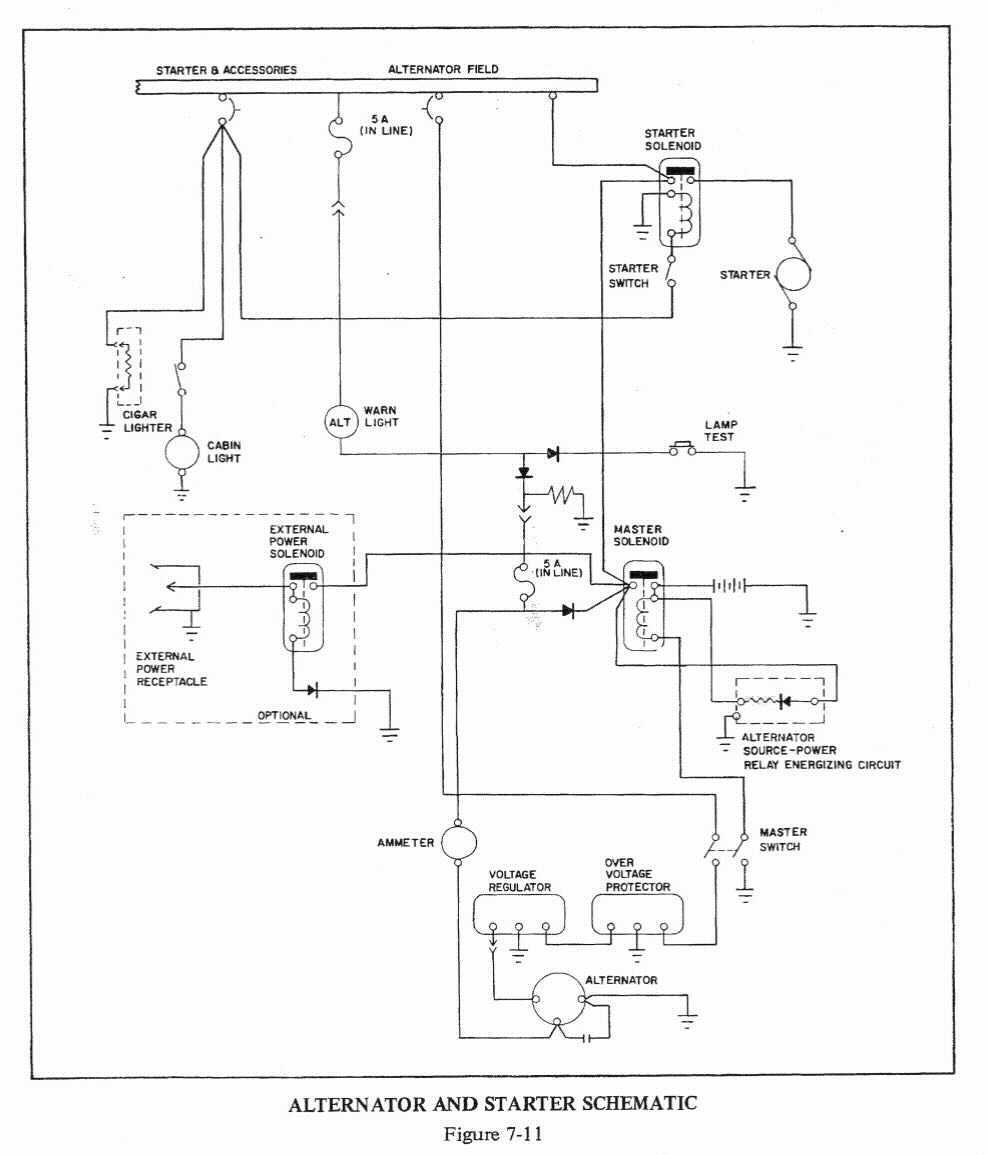Task III.C - Operation of Systems 7 - Electrical
Lesson Overview
- Objective
-
The student should develop knowledge of the elements related to the usage and performance of the PA-28-151 Electrical system. The student should show understanding and practical working knowledge for scenario type training.
- Reference
-
-
(PHAK) FAA-H-8083_25B
-
PA-28-151 POH
-
- Elements
-
-
Fuel Tanks
-
Oil System
-
- Equipment
-
-
iPad
-
White board and markers
-
- Schedule
-
-
Discuss objectives
-
Review material
-
Development
-
Conclusion
-
- Instructor Actions
-
-
Discuss lesson objectives with student
-
Present the lecture
-
Answer questions the student has
-
Question the student to verify knowledge and note taking
-
Assign certain areas to focus on for homework
-
- Student Actions
-
-
Listen to presentation
-
Take notes on the lesson
-
Ask questions if further explanation is needed or just curious
-
- Completion Standards
-
The student understands the elements of the PA-28-151 electrical system and shows proficiency in areas of operation that require attention.
Instructor Notes
- Attention
-
So today let’s talk about the PA-28-151 electrical; do you have a guess as to why this system would be important for us to know?
- What
-
-
Review Objectives and Elements/Key ideas
-
- Why
-
Knowing the electrical system will allow the student to become a more competent pilot and ensure basic knowledge/ability in the event of abnormality or emergency during flight.
Lesson Details
Electrical Diagram
-
Refer to PA-28-151 POH pg. 7-51 for diagram

Electrical System
The 14 volt electrical system includes a 12 volt primary battery, a 60 ampere 14 volt alternator, a single external power connector. The electrical system is capable of supplying sufficient current to all the required equipment for day/night IFR and day/night VFR operations.
Primary Battery
The primary battery provides for electric power to the equipment when the engine is not running and for engine starting. When energized by the battery master switch the primary battery supplies electrical power to the starter, as well as all items on the Essential Bus, Non-Essential Bus and Lighting Bus. If it becomes necessary to charge the battery by an external source, it should be removed from the airplane prior to charging. The primary battery is mounted on a shelf in the aft fuselage area.
Alternator
The alternator is belt driven directly from the engine. Once the engine is running and the ALTR switch is activated, the alternator becomes the primary source of electrical power for the aircraft. The primary battery provides stored electrical power to back up the alternator. During normal operations, the battery is charged by the alternator.
Voltage Regulator
A solid state voltage regulator is located just forward of the instrument panel on the left side of the aircraft. The voltage regulator is designed to regulate the electrical system bus voltage to 12 volts and to prevent damage to the electrical and avionics equipment by removing the alternator from the circuit if its output exceeds 16.5 volts. In this event the JPI 930 digital display will display an unnunciation for over-voltage.
Emergency Procedure / Alternator Failure
-
Alternator light illuminated during flight
-
Check the ammeters output
-
If the ammeter is reading zero or below you should:
-
-
Reduce the electrical load as practical in order to preserve battery
-
Turn Alternator off
-
Check circuit breakers
-
Turn on each alternator one at a time in order to observe individual output
-
With minimal electrical load observe ammeter when turning on each alternator
-
-
Change electrical load as required
-
If electrical load exceeds 70 amps then problem may exist with alternator.
-
Conclusion
-
Brief review of the main points
-
An awareness and understanding of the electrical system is required to be a proficient pilot. Recognizing the components of the electrical system and being able to identify what they do creates an overall safer pilot that is more qualified to handle unforeseen circumstances.
ACS Requirements
To determine that the applicant exhibits instructional knowledge of the elements of principles of flight by describing:
-
Primary and secondary flight controls
-
Trim
-
Powerplant and propeller
-
Landing gear
-
Fuel, oil, and hydraulic
-
Electrical
-
Avionics including autopilot
-
Pitot static, vacuum/pressure and associated instruments
-
Environmental